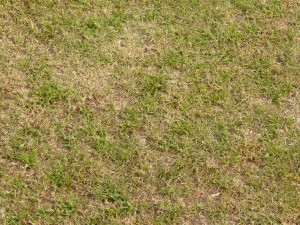
WATERING AND SOIL pH

As counter intuitive as it may seem, you should water your lawn LESS often for better results. Really? The answer is yes, BUT: when you do water, water DEEPLY. Making sure you water sufficiently helps to develop grass roots that go farther down into the soil. Grass watered frequently but shallowly develops shallow roots and the many horizontal ‘runners’ that make up a mat of thatch. Thatch is a loose, intermingled tangle of organic matter that will prevent air and water from reaching grass roots. The result is a lawn that doesn’t look its best and is not benefiting from the watering you are doing.

So, how do you know if your lawn is getting enough water? Watering so that your grass receives at least 1 to 1 and 1/2 inches of water a week is important. Take a tuna fish can, or empty cat food can, and place it within the zone of the sprinkler and run the sprinkler until the can is full. Check the time it took, and use that as the basis for watering in the future. If the soil has become quite dry, it may work better to give the grass only 1/2 inch, wait for about 90 minutes, then give it another 1/2 inch.
When to Water?
Avoid watering from 11AM to 3PM, the hottest part of the day. It is best to water between 6 and 10AM. There is less wind, less hot sun, and your lawn has a full day to dry. While you want the roots to be wet, it is important for the grass blades to dry off after watering. For this reason, watering at night invites mildew and fungus. If you cannot water in the morning, doing it between 4 and 7PM is your next best choice.
What About Soil pH?
The pH of the soil (the level of acidity vs. alkalinity) is also important to your lawn’s health. The ideal pH for grass is 6.5 to 7. Since most soil on Long Island is lower than that, we recommend spreading lime to bring the number up. While rare for most lawns, if the pH is too high, soil sulfur should be added. A higher number than 7.0 is more favorable to weeds.
When Should I Apply Lime?
Lime is ideally applied twice a year, once in the middle of the growing season, and again in the fall.
